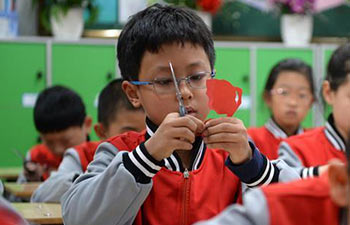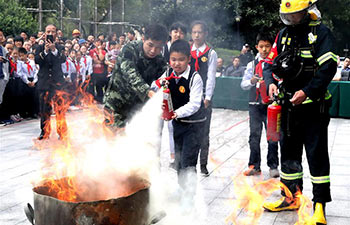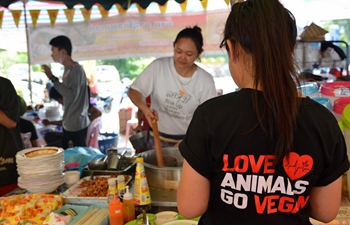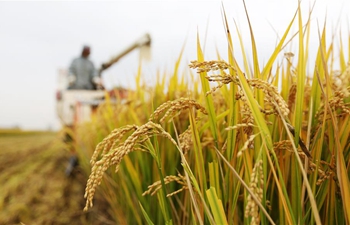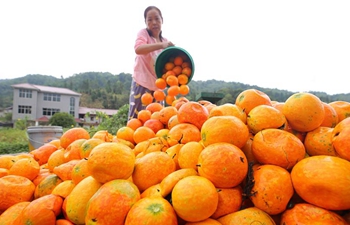
A Yemeni displaced student walks at the school's corridor after he received a schoolbag and notebooks provided by a local charity, in Sanaa, Yemen, on Oct. 9, 2018. (Xinhua/Mohammed Mohammed)
by Mohamed al-Azaki
SANAA, Oct. 10 (Xinhua) -- In a public elementary school in Yemen's rebel-held capital Sanaa, more than 200 pupils crammed inside a small classroom that normally accommodated no more than 20 students.
Wearing ragged green uniforms and shabby shoes, these students only had several broken chairs to share, as most of them had to sit on the bare cold ground.
More late students, aged between seven and 13, were still arriving in the early chilly winter morning, most of whom came barefoot.
Some of the students carried one notebook and some did not have money to buy a single pencil. Hundreds of them even did not afford a school bag.
It is the reality that more than 22 million Yemeni people now have to face after more than three years of devastating war and blockade, which have triggered wide-spread hunger and diseases.
Omar Mukhtar al-Hashedi, a 12-year-old sixth grade student at 26 September School in downtown Sanaa, said his father lost his job because of the war and deteriorating economy.
"We do not own a house, and my father has to wash cars in the streets in order to pay rent for our small apartment," Omar told Xinhua.
"He has no money to buy me a pen or a bag," he said.
Thousands of cars are dead in silence off the roads because of an unprecedented severe fuel shortage which started weeks ago amid soaring prices of basic consumer goods.
The ongoing war between the Yemeni government, backed by the Saudi-led coalition, and Iran-allied Houthi rebels is exerting a devastating impact on the health of the young generation and their future.
According to recent UNICEF figures, 2 million children have dropped out of school since the conflict in Yemen escalated in early 2015.
Meanwhile, almost three quarters of public school teachers have remained unpaid for more than two years, putting the education of 4.5 million children at grave risk.
More than 2,500 schools have been damaged or destroyed, while others are now used as shelters for the displaced or as bases of armed groups.
Three quarters of Yemen's population are in need of humanitarian aid, including 8 million who need food to survive, according to UN figures.
Some local and international charities are struggling to prevent the already fragile education system from falling into a mass destruction.
Ahmed Abdulhadi al-Soufi, manager of the state 26 September School, told Xinhua that the number of students is decreasing day by day.
"Like thousands of teachers, I haven't been paid for more than two years. Many teachers quit the job because they have to work on anything else to earn income to feed their families," he said.
"We still have a very few number of teachers to teach without pay, but several classrooms remain for hours everyday without a teacher and students wait and wait and leave," the school manager lamented.
Angela Abu-Asba, chairwoman of a local charity, said her charity distributed 60 school bags in this school, and 100 bags to schoolgirls in nearby Balqis School.
"There are more than a thousand students in this school, and there are thousands of families cannot afford to buy a pencil for one student," she told Xinhua.
Several internally displaced pupils, who fled escalating war in the Red Sea port city of Hodeidah, were among those who received school bags at 26 September and Balqis.
Until now, the civil war has pushed Yemen to the brink of mass famine, showing no sign of ease.




